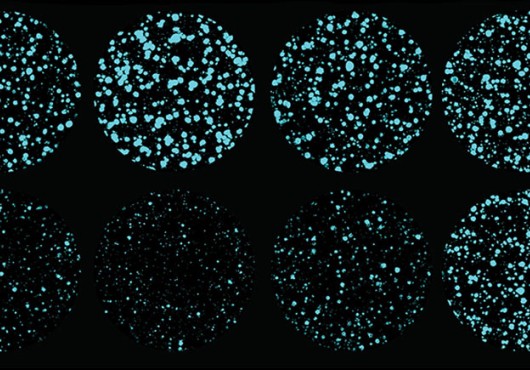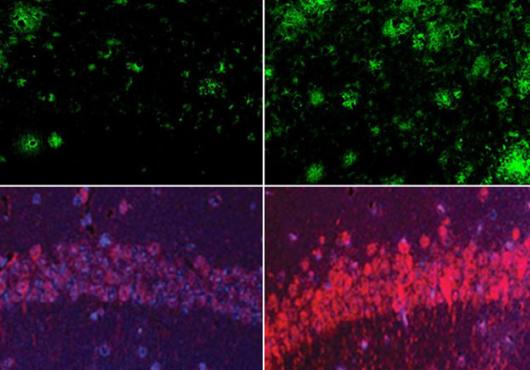At a glance
A new vaccine candidate that could be delivered alone or as an ingredient in other vaccines improved on several key limitations of current mRNA vaccines in animal studies of COVID-19.
The new mRNA approach stimulated production of a protein that activates several elements of immune protection.
It also reduced side effects by ensuring that the vaccine acts only in muscle tissue.
During the COVID-19 pandemic, mRNA vaccines came to the rescue, developed in record time and saving lives worldwide.
Harvard Medical School researchers at Boston Children’s Hospital have now developed two technologies that could make these and future mRNA vaccines more potent and longer-lasting — at smaller doses and with fewer side effects.
Findings are described July 24 in Science Translational Medicine.
Current mRNA COVID-19 vaccines instruct cells to make the SARS-CoV-2 spike protein. This helps the immune system recognize the virus and quickly make antibodies against it.
However, these vaccines offer short-lived immune protection, requiring frequent boosters, and stimulate less of a response in people over 60. They also can cause side effects.
The lab of David Dowling, HMS assistant professor of pediatrics in the Precision Vaccines Program at Boston Children’s, created a version that induces a more precise level of immune stimulation and that minimizes effects in non-targeted body tissues in mice.
“In current mRNA vaccines, delivery is not controlled,” he said. “Immunomodulation is kind of random and not built into the vaccine. We wanted to solve both of those problems through rational design.”
Turbocharging vaccine responses
Dowling’s lab has long studied a naturally occurring immune protein called interleukin-12, or IL-12.
In 2012, the lab showed that IL-12 potently activates dendritic cells: crucial first responders in the immune system. Dendritic cells can activate helper and killer T cells and can provide a supportive environment to develop effective B-cell responses and antibody production.
To optimize the immune response, the new study harnessed a specific IL-12, IL-12p70. Byron Brook, HMS research fellow in pediatrics at Boston Children’s, co-led the work with Valerie Duval of the biotechnology company Combined Therapeutics, Inc.
They found that the current Pfizer–BioNTech mRNA vaccine against COVID-19 doesn’t induce production of IL-12p70 in human cells. So they designed an mRNA that explicitly directs cells to make it.
“We wanted to give the signal needed to optimize the immune response,” said Dowling.
They designed the mRNA so it could stand alone or be used as an adjuvant to turbocharge other vaccines.
When they gave it to mice as an adjuvant to the Pfizer–BioNTech vaccine, the animals produced large amounts of IL-12p70 in addition to the spike protein. The adjuvant boosted multiple elements of the immune response — not just antibody production, but also cytokine production and immune cell activity, each important for protection from SARS-CoV-2.
Moreover, in aged mice, the immune response with the adjuvant reached levels similar to those in young adult mice.
The adjuvant-vaccine combination also produced more long-lasting immunity than the current vaccine alone. Animals receiving the adjuvant showed signs of amplified immunity even one year later.
More research is needed to determine whether the adjuvant could reduce the need for frequent vaccine boosters in humans.
Reducing side effects of mRNA vaccines
The new mRNA incorporates a second technology — a so-called Multi-Organ Protection (MOP) sequence — designed to reduce side effects.
Although the mRNA travels to cells throughout the body, the MOP sequence is designed to ensure that it acts only on muscle tissue. The team confirmed this precision-targeted effect when they tested it in mice. In other tissue types, including vital organs, MOP binds to microRNAs inside the cells, telling them to recycle the mRNA so they can’t use it to make IL-12p70.
“With the MOP system you get controlled distribution just to muscle cells, where the vaccine is injected,” said Dowling. “This is unconventional and a step forward.”
In muscle tissue, MOP amplified the effects of the IL-12p70 mRNA, inducing immunity in both mice and hamsters.
Because of its potency in boosting IL-12p70, very low doses of the Pfizer–BioNTech mRNA vaccine were needed to stimulate a strong immune response. This observation suggests the adjuvant could make human vaccine supplies go further and ensure there’s enough vaccine should it be needed quickly, the authors said.
“Our technology gives the ability to reduce the vaccine dose but get the same level of immune response,” said Brook. “This is what’s needed for mRNA vaccines to be used more widely.”
Long-term outlook
The team believes the technology could be adapted for other mRNA vaccines in development, such as flu vaccines.
Alternatively, the optimized version of the mRNA vaccine could be given as an adjuvant together with other types of vaccines.
They have moved on to testing it in non-human primates, whose immune systems resemble more closely those of humans, with the ultimate goal of moving into human clinical trials.
Adapted from a Boston Children’s blog post.
Authorship, funding, disclosures
Additional authors are Valerie Duval, Soumik Barman, Lauren Speciner, Cali Sweitzer, Asad Khanmohammed, Manisha Menon, Kimberly Foster, Pallab Ghosh, Kimia Abedi, Jacob Koster, Etsuro Nanishi, Lindsey R. Baden, Ofer Levy, Thomas Vancott, and Romain Micol.
The work was partially supported with in-kind support from Combined Therapeutics (Boston, MA) and by the U.S. National Institutes of Health/National Institute of Allergy and Infectious Diseases Adjuvant Discovery Program (contract 75N93019C00044). The Precision Vaccines Program is supported in part by the Boston Children’s Department of Pediatrics and Chief Scientific Office. The work within the program on this project was also funded in part by philanthropic support from a Stop & Shop award.
Brook and Dowling are inventors on a pending patent application on the technology. Several co-authors are employees of Combined Therapeutics, which was a major sponsor of the research together with the National Institute of Allergy and Infectious Diseases. The company and its co-authors are or were supported by private investments. See the paper for further disclosures and acknowledgments.







